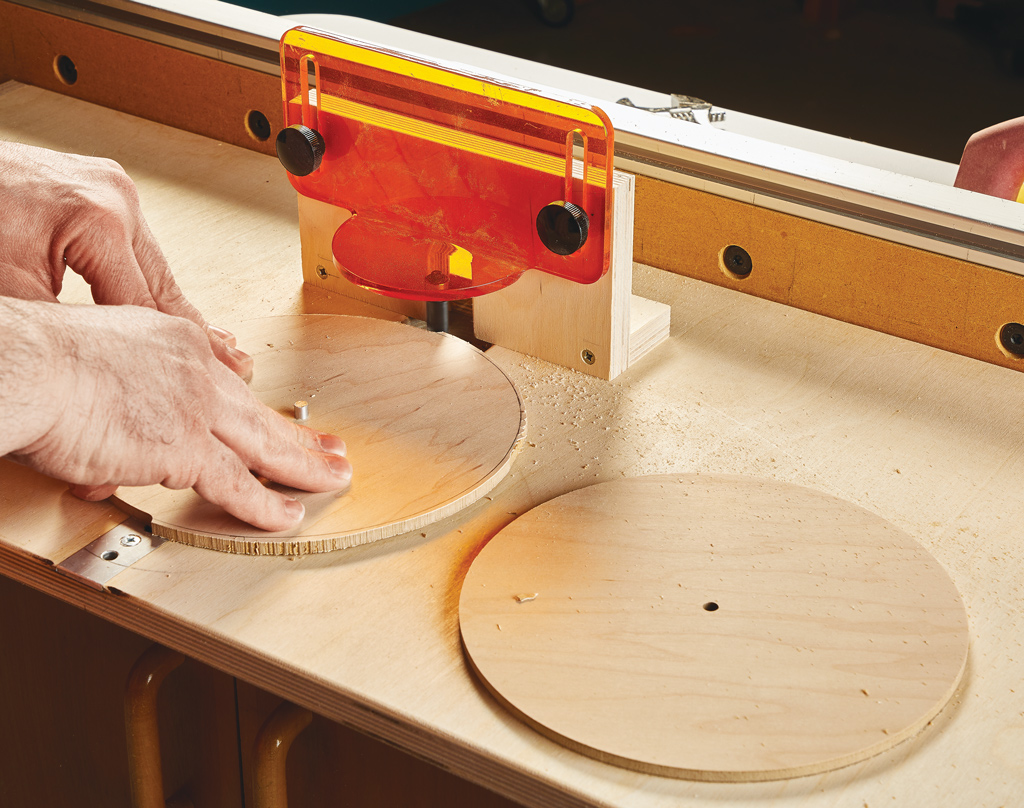
Woodworking can be pretty flexible. There's usually more than one tool and technique you can use to perform a particular task. But, there are some woodworking operations that can best be accomplished in a particular way. Adding a decorative edge profile to a glued-up panel falls into this category. Routing the profile is the number one option for this task.
Assuming the size of the panel allows it, I always rout edge profiles at the router table. The setup is easier and the large surface of the table provides good support for the panel. And although the operation may seem pretty foolproof, there are always a few tips and techniques that can be used to help produce a smooth, crisp, attractive profile.
1 Flatter is Better
The router table provides a large, stable bearing surface. But in order to realize the full benefit it offers, the table has to be smooth, flat, and "catch-free."

If the table isn't flat, you may have trouble routing a consistent, full-depth profile along an entire edge. A table with a very minor "hump" is workable, but it's difficult to get good results with a concave surface. The center of the panel will ride up as it passes over the bit and you may not be able to press it flat against the table. So make sure the table is flat.
If you use an insert in the table, it should be perfectly flush with the surrounding surface. This will eliminate the chance of the panel catching, bumping, or dipping as it passes over the edge of the insert, resulting in a "hiccup" in the profile. Then check for rough spots, protruding screws, or other irregularities that might mar the surface of the panel.
2 Use the Fence
Most profile bits have a bearing on the top that will guide the cut along an edge. Although using the bearing for this purpose simplifies the setup, I prefer to use the router table fence to guide the panel across the bit.
A bearing-guided bit will follow any irregularities in the panel edge and you may not get a smooth, consistent profile. You'll also find that cuts made using only the bearing tend to produce a rougher, "chattery" surface.
The fence provides a long, stable guide surface that's completely independent of the spinning bit. Just make sure that both your fence and the edges of the panel are good and straight.
3 Multiple Passes
When routing all but the very smallest profiles, it works best to make multiple, light passes. Taking light cuts will minimize chipping, leave a much smoother surface, and it's easier on the bit and the router. The depth and number of passes is determined by the size and shape of the profile you're routing and the type of wood. However, always make the final pass a very light "skim" cut, removing only fine shavings.

There are two techniques for taking multiple passes - you can raise the height of the bit between cuts, or move the fence back, exposing more of the bit. I prefer the latter approach.
For starters, it's easier to move the fence than to change the bit height. And once the bit height is set and tested, you're assured of an accurate depth-of-cut.
4 Correct Order
When routing across end grain, you'll always experience some degree of chipout as the bit exits the cut. So if you're going to rout a profile on all four edges of a panel, always start by routing across one end-grain edge. This way, the following long grain pass will rout away any problems.

If you plan to rout a profile on three edges of a panel, plan your first end cut so that you can next rotate the panel counterclockwise to rout the long edge. Follow this with the final end cut. To avoid chipout on the second end, use a backer board.
5 Consistent Depth

It can be a challenge to rout a profile to a consistent depth along all the edges. This is especially true at the corners. And adjoining profiles that don't match up can be particularly noticeable.
The cause is inconsistent downward pressure when feeding the panel across the bit. It's common to hold back on the force at both beginning and end of the cut. A simple solution is to take another pass applying firm pressure from end to end.
You can avoid this problem entirely by using a featherboard to help press the panel flat to the table.
6 Feed Rate

Finding the perfect feed rate is always tricky. If you move the panel too fast, you may get chipout or a rough cut - too slow and you'll burn the edge.
A natural inclination is to slow down as you approach the end of a cut. This is especially problematic on end grain. Your goal is to avoid chipout, but the unintended result is burning. The solution is to use the initial passes to find a feed that minimizes both problems. Then try to be consistent.
7 Complex Profiles

Some profiles require cuts made with two different bits. In this case, routing the larger or outer profile first establishes a "baseline" to guide you when routing the second profile.












